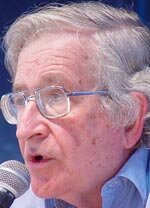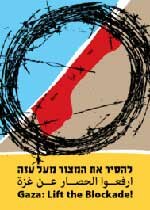By Leandros Fischer, Weekly Worker – 26 Jan 2012
www.cpgb.org.uk/article.php?article_id=1004697
Leandros Fischer reviews ‘False prophets of peace: liberal Zionism and the struggle’, Tikva Honig-Parnassfor, Palestine Haymarket Books, 2011, pp264, £14.99
Zionism, the movement for an exclusivist Jewish state in Palestine, is today the last active project of colonisation. Its domination over the area from the Mediterranean to the Jordan is intertwined with the dispossession of the indigenous Palestinians. Not just the dispossession of those living in the West Bank and Gaza, but also that practised on the Palestinian citizens of Israel. It is a historical process that until this day ranges from institutional discrimination to blockades, land seizures and outright massacres.
Yet a great deal of Zionism’s success in gaining legitimacy among western public opinion has historically stemmed from its ability to project a certain image abroad: that of a vulnerable liberal democracy with socialist leanings, in the midst of an Arab world ruled by authoritarian nationalist or religious dictatorships. This myth was carefully constructed, not by today’s dominant right and far right, but by liberal Zionism in the form of the once hegemonic labour Zionist movement, which laid the infrastructure of Israel’s legal system, including, among others, the law of return and the land laws. Despite being politically irrelevant today, its ideological premises have survived and constitute an essential part of Israel’s political culture, as well as propaganda machine, otherwise known as hasbarah. They also form the backbone of Israeli academia; the role of left Zionist intellectuals has been instrumental in conferring legitimacy – at home and abroad – on a series of left Zionist policies, from the Oslo process to the rampant neoliberalism dominating the Israeli economy. More critically, these myths are also used to stifle, hijack and divert leftwing or even liberal criticism of Israeli policies, away from the increasingly successful BDS (boycott, divestment, sanctions) campaign and towards a watered-down discourse which views the conflict as being merely about peace between two symmetrical opponents.
This makes a reading of Tikva Honig-Parnass’s new book all the more important. It is not only an academically brilliant work, backed up by a thorough description of contemporary left Zionist and post-Zionist discourse in Israel, but also an accessible and useful handbook for activists engaged in the struggle for Palestinian rights. Moreover, it is written by a former insider: Honig-Parnass, a radical sociologist and socialist activist, was actively involved with the Mapam, the most leftwing Zionist party, during the formative year of 1948, and also served as the party’s Knesset secretary in the 50s before breaking with Zionism in the early 60s.
‘Democratic’
For starters, Honig-Parnass points to the evident contradiction in Israel’s self-definition as a ‘Jewish and democratic’ state, a definition coined by the labour Zionist movement and which has prevailed since then in the discourse of most progressive intellectuals and publicists. This definition postulates the concept of the ‘Jewish majority’ as a condition for preserving the ‘Jewishness’ of the state. She hints at the sinister connotation of this formula, which does not point to the right of self-determination of Israeli Jews, but rather to the Zionist ‘right’ to the ongoing colonisation of Palestinian lands, while denying the legitimacy of Palestinian rights – both their collective rights as a national minority within Israel, and their right of self-determination in the 1967 occupied territories.
Not only has the Zionist left not resisted the prevalent racist discourse of a “demographic danger” to the Jewish character of Israel due to higher Arab birth rates, but it has actively fostered it as its main thrust of justifying a two-state solution. For the Zionist left this solution includes the annexation of important blocks of settlements to Israel, a fragmented Palestinian state of limited sovereignty, as well as a rejection of any debate about the fate of those Palestinians expelled by Zionist militias in 1948. Whereas Netanyahu, Lieberman and the ethno-religious settler movement do not feel compelled to present any progressive credentials to liberal world opinion, Zionist left intellectuals have in the recent years being engaged in a series of semantic acrobatics, aimed at diluting the inherent contradiction of having an ethnocratic liberal democracy. All this is ably demonstrated in the book.
Especially affected by the discourse and practice of the Zionist left are Israel’s Palestinian citizens, those who survived the 1948 ethnic cleansing. They make up almost one fifth of Israel’s population within the Green Line. Whereas the state of Israel grants some civic rights to its Palestinian citizens, its refusal to recognise their status as a national minority renders those rights ineffective, as Honig-Parnass shows through a series of facts and legal precedents. Also, the historical emphasis of the Zionist left on land means that most of what is defined as “state lands” were confiscated from Palestinian’s owners – refugees and citizens alike – under the rule of Labour-predecessor Mapai and the more leftwing Mapam (largely constituted today by Meretz) in the first years of the state. Even today, 93% of the land in Israel is reserved for exclusive Jewish use. This has led to a suffocation of Arab towns and communities, given their inability to grow naturally. Finally, the law of return, which grants automatic citizenship to Jewish newcomers and which was put into effect by Mapai and Mapam, is not only about “full citizenship” as such: it confers a wide range of benefits like access to land, education and housing.
The book also examines the love-hate relationship of secular, liberal and leftwing trends of Zionism with religion. While claiming to stand for a humanist and secular vision, the Zionist left never questioned the religious criteria for entering the Jewish national collective and never hesitated to close ranks with the most extreme rightwing brands of Zionism, secular and religious. The Zionist left’s inability to answer the question, ‘Why precisely here?’ (Palestine) rendered it captive to religion and thus receptive to a series of capitulations and compromises with the religious establishment, like the ‘status-quo agreement’ signed between Ben Gurion and the orthodox establishment before the creation of the state, which guarantees a rabbinate monopoly on matters of birth and marriage, for instance.
Ultimately, the Zionist left has from its inception steadily moved to the right, abandoning every trace of progressive pretence and reducing the meaning of ‘left’ in Israel to a slightly more conciliatory attitude towards US-sponsored initiatives. The socioeconomic dimensions of the term ‘left’ have also largely remained dormant, since left Zionism’s main two parties endorsed – and initiated in the case of Labour – the neoliberal restructuring of the Israeli economy since 1985. Their electoral results are today meagre, with Labour being a junior partner of the current right-extreme right government.
Not only the Zionist left, but also the post-Zionist current, comes under scrutiny in the book. Post-Zionism refers loosely to a point of view among parts of Israeli academia, according to which the age of Zionism has come to an end, thus making an ethnocratic Jewish state obsolete. According to Honig-Parnass, this liberal attempt at a departure from Zionist discourse has failed to rise to the challenge. Being influenced by the post-structuralist stream of the early 90s that focussed on identity politics, it has repeatedly evaded the entire issue of Zionism’s ongoing discrimination against Palestinians and ignored their special status as the dominant Other from a Zionist point of view. Post-Zionists have never questioned the legitimacy of neoliberalism and Israel’s status as the US’s main enforcer in the region, and their proposals for an ‘inclusive’ set-up deny in practice the validity of Palestinian national rights – for example, by accepting the legitimacy of West Bank settlements.
Zionist left influence
Given this current state of affairs, it is easy to ask why all of this matters. It does, in the sense that the Zionist left positions have been adopted by the right and far right. All Zionist parties have in principle accepted that the continuation of Zionist colonisation must be conditioned on the granting of some form of self-rule, however meaningless, to the Palestinians in the occupied territories in order to placate their resistance. This also includes an acceptance of “mutually agreed land swaps” with the Palestinian Authority in order to curb the “demographic peril”. This is a far cry from the irredentist claim of Menachem Begin to the east bank of the Jordan river as part of “Greater Israel”. But this process constitutes just a part of a wider trade-off: whereas the Zionist right has adopted those principles, as well as the Zionist left’s aversion to employing Arab labour (today Israel prefers to employ migrants from Asia and eastern Europe for the most unskilled jobs than possibly cheaper Arab labour), the Zionist left has disturbingly adopted the most militarist aspects of the right.
This seemingly led to a mass conversion of Zionist left intellectuals after the failure of the Camp David talks in 2000. From advocating ‘peace’, they suddenly adopted the slogan, ‘There is no partner for peace’, and gave legitimacy to Ariel Sharon’s subsequent onslaught on the Palestinian Authority. And in recent years, they have trailed behind rightwing governments in supporting the 2006 war on Lebanon and the 2009 Gaza massacre.
But for progressive people outside Israel/Palestine, an analysis of Zionist left discourse and practice, as provided in this book, has a far deeper meaning. It begs the question of what a left is all about. In Israel, the once dominant Zionist left has never been about fighting for workers’ rights (not even in a mildly social democratic manner) or the rights of oppressed minorities, first and foremost the indigenous Palestinians. Instead, the Zionist left, even after losing its monopoly in government in 1977, has traditionally formed the backbone of Israeli political, economic and military elites. Its intellectuals and publicists like Amos Oz are still considered to be the ‘consciousness of the nation’ and have a great impact on today’s proponents of the vegetating two-state solution. Zionist left figures like Yossi Beilin have played a critical role in fermenting a veil of equality regarding the highly unequal terms of the Oslo agreement and the more recent Geneva initiative.
And herein lies the Zionist left’s main international success: namely the framing of the conflict as being about war and peace between two equal parties, ‘two peoples who fight for the same territory’, rather than that involving colonisers and colonised, as clearly shown around the end of the book. Included in this success is also the spreading of the idea of a conflict starting in 1967, with its fictitious semantic differentiation between ‘Israel proper’ and the ‘occupied territories’. These premises have for years succeeded in banishing the Israel-Palestine conflict to a completely different moral universe than other conflicts like Algeria, Vietnam or South Africa under apartheid.
These are also premises accepted at first glance by many people in the west sincerely appalled by Israel’s brutalisation of the Palestinians. They are today not just propagated by Labour and Meretz, but also by far more principled members of the Israeli ‘peace camp’. Despite their courageous resistance against the 1967 occupation, they have stopped short of addressing the connection between Zionism’s main premises and the regime discriminating against Israel’s Palestinian citizens. Equally problematically, this trend, which did not capitulate to the open warmongering after 2000, has uncritically lent its support to the corrupt and collaborative Palestinian Authority of Mahmoud Abbas and the ‘reformer’ Salam Fayyad, effectively condoning the authoritarian neoliberal regime imposed by the PA in the West Bank.
Understanding the philosophy of liberal Zionism is essential to formulating an alternative path, possibly leading to resolving a conflict which claims the lives of many ordinary Israelis. In her critique, Honig-Parnass also succeeds in mentioning past instances of principled Israeli-Jewish resistance to Zionist policies. This includes the Israeli Black Panthers of the early 1970s, a group of disaffected Mizrahim (Jews from north Africa and the Middle East), who linked their socioeconomic grievances to solidarity with the Palestinians. It also includes the now defunct Matzpen, the socialist organisation with its pioneering class analysis of Zionism as an active colonisation project and wider regional context of the Middle East, of which Honig-Parnass was a member. Given the essentialist quagmire of identity politics, the futility of a just two-state solution, the Arab revolts, as well as the all-encompassing global crisis of capitalism, a recourse to this alternative vision presented in the book may well offer the reader an inspiring new approach to understanding the conflict.
Finally, at a time when the hasbarah is working overtime to present Israel as a place where liberal democratic values, individualism and LGBT rights thrive amidst a sea of fundamentalist obscurantism, False prophets of peace is essential reading for winning the debate against those keen to smear solidarity with Palestinian rights as employing double standards and engaging in the demonisation of the ‘only democracy in the Middle East.







































